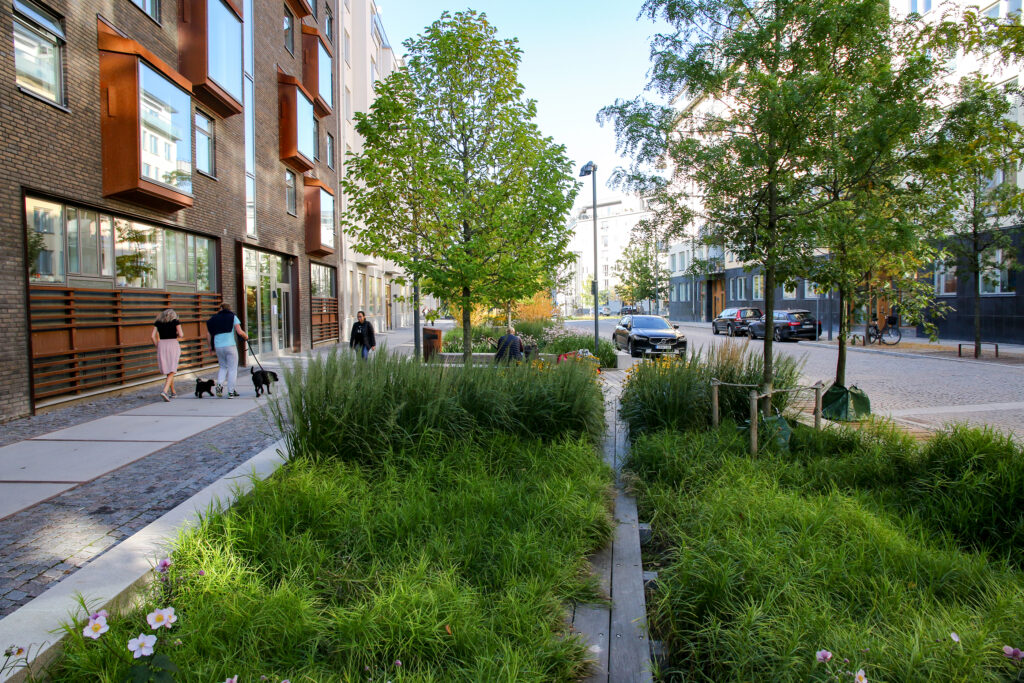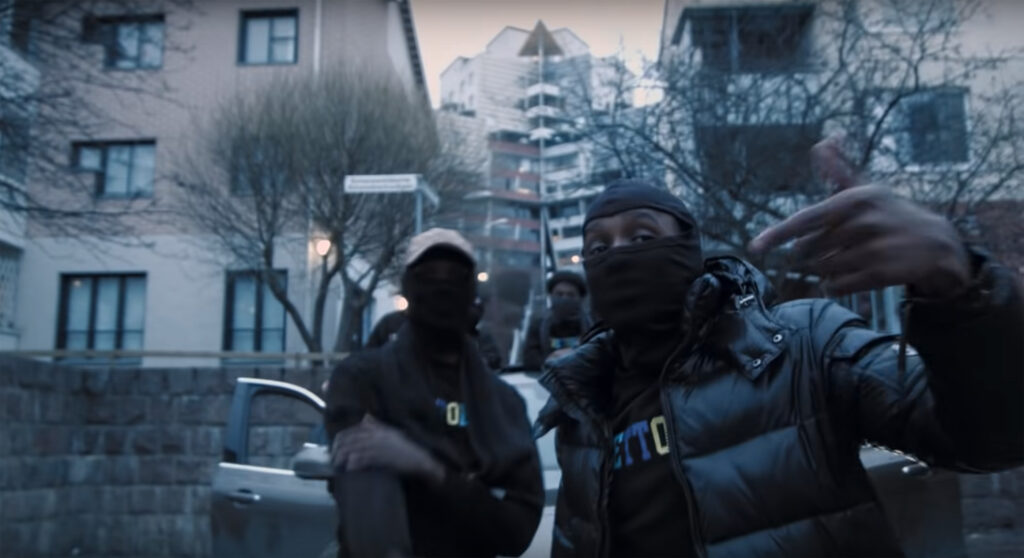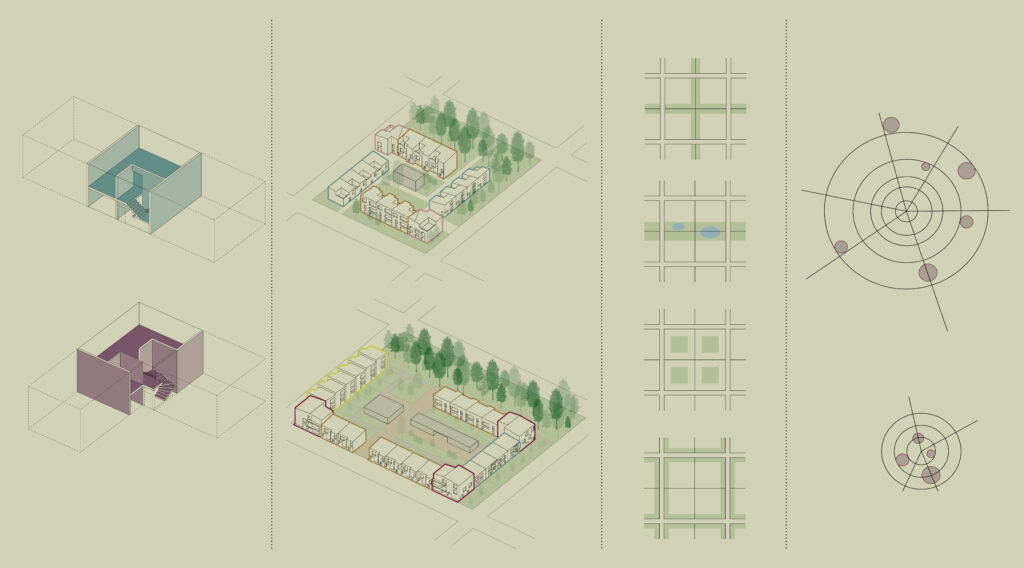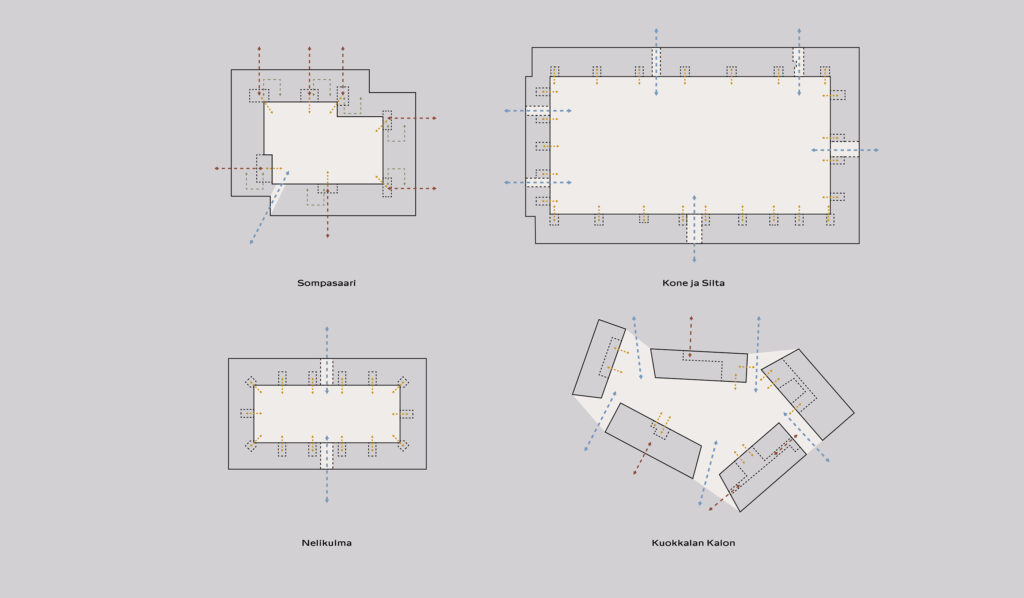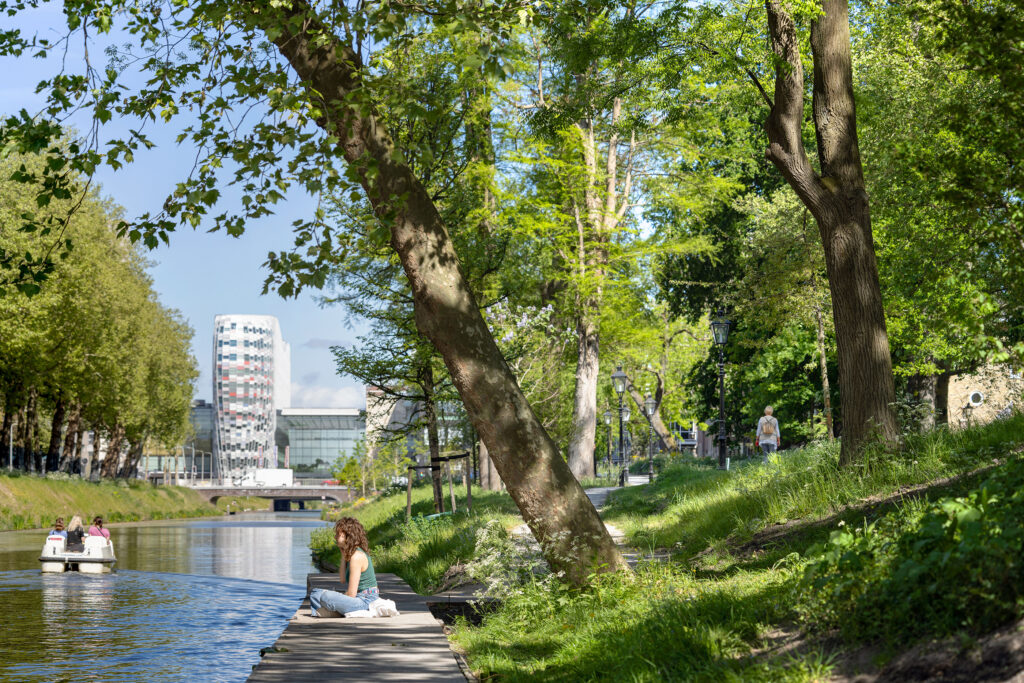Safely Tucked from the Urban Realm

The Lauttasaari Daycare Centre by Luutonen Architects lines the street like a wall. On the other side opens up a small rocky forest, the children’s secret garden.
The Lauttasaari daycare centre represents the construction of daycare centres of a new scale in Finland – it has room for 250 children. How did the large scale affect the design work, and how did you make the building perceivable for young children, architect Antti Luutonen?
The premise for the design work was a large group of children who have activities in small groups. In addition to the group rooms, the small groups can “camp” on nature trails, balconies and hallways.
The plot has been demarcated from the street with a long wall that shelters the yard. The wall consists of the main building and outbuildings. A noise report, which was carried out during the sketching phase, also affected the solution. The sizeable windows that extend to the floor level have been dimensioned according to their principal users – the children. On the street side, the purpose of the large windows is also to create an image of a building that is smaller than it actually is.

Lauttasaari Daycare Centre
Luutonen Architects / Antti Luutonen, Eva Knif, Anu Halme
Location Isokaari 30, Helsinki
Gross area 2 444 m2
Completion 2020
More photos and drawings of the project →
There are both Finnish- and Swedish-speaking daycare groups in the building. How did the bilingualism affect the design?
Due to the bilingualism, we divided the functional concept into two parts. The Finnish-speaking groups are located at the southern end of the long building, the Swedish-speaking groups at the northern end, and they have shared facilities in the mid-part of the building. An outdoor ramp divides the yard into areas for Finnish- and Swedish-speaking children. The division of such a large number of children into two can also be seen as an advantage.
The daycare centre is located between a park area and Isokaari street, and on the opposite side of the street, there is Lauttasaari Coeducational School designed by Kaija and Heikki Siren. How does the building react to its environment?
The daycare centre and the school form a pair of public buildings. This pair can also be perceived as a gate, in terms of the cityscape, between the different parts of Isokaari street. During the sketching phase, we studied the characteristics of the buildings constructed along Isokaari Street in the 1950s and 1960s. The design of the daycare centre reflects the architecture of the time, but we, however, brought it up to the present day.

The characters of the street frontages and yard facades of the building are very different. What motivated this solution?
The idea was to create a building that has been fitted to the scale of the city, hiding a secret garden. On the side of the yard, the projecting balconies and eaves provide sheltered play areas for young children.
The rocky plot has a key role in the architectural solution. Could you tell us more about the building’s relation to nature?
Right from the beginning, we had a landscape designer with whom we studied the impacts of the alternative locations of the building on the exceptionally splendid site. It became clear that construction on the street sides was the best solution for the preservation of the topography, trees and rocks. Sheltered play areas and paths have been created on the rocky mound.
How were the objectives of sustainable construction considered in the design work?
Due to the long design and construction period, the sustainable construction strategies of the City of Helsinki have currently progressed further than what could be anticipated at the beginning of the project. However, in the sketching phase, the entire design team, the developer and users gathered several times and studied the life-cycle objectives and environmental impacts of the project, particularly energy saving. The starting point was a “nearly zero-energy building”, in accordance with the City of Helsinki’s low energy guidelines of the time.

The materials play a significant role in the building. On which criteria were they selected?
Sustainability was emphasised in the selection of the materials. We also wanted to allow the users to make observations by leaving the cast and joint marks visible on loadbearing concrete walls, beneath the translucent paint.
Artworks by visual artist Maija Luutonen have been located in various parts of the building. In which phase of the design process did they come along?
It is a work of art that consists of many parts. There is a large textile hanging on the wall of the daycare centre’s hall, lighting fixtures in staircases and carvings in stones in the yard. The so-called percentage financing art project began during the sketching phase of the building, and the art project was carried out together with the Helsinki Art Museum (HAM). According to the percentage financing, approximately one per cent of the construction budget of the city’s major public building projects is allocated to art acquisitions. The architect didn’t steer the location of the artworks but the artist herself made a proposal. The hanging textile is a key part of the artwork: it is like a map. Some parts of the map recur in the other two parts of the artwork. In addition to the architect, the sketch was also commented on by representatives of the future users of the building.
PIA KINGO, Manager of the Lauttasaari Daycare Centre, why was it necessary to build a new daycare centre in Lauttasaari and what kind of objectives were set for its design?
The project was launched a long time before I came along, which was a couple of years before the completion of the building, so the designs had proceeded for quite a while. At the time, details were discussed.
In Lauttasaari, the daycare situation has been very difficult for a long time, and it had to be relieved. The new daycare centre with 250 children isn’t exceptionally large. Today, it is common to have 300 or more children.

When was the daycare centre opened, and is daily life there smooth?
The daycare centre was opened in April last year, and daily life has been smooth. Parents have given feedback especially on the yard, which is natural and exceptionally large. It is interesting to see how it changes and functions in different seasons. The interior has also been praised, the wood panelling in the central corridor is calming. The festive and sports halls are luxury.
We don’t have any experience of the building outside the Covid-19 pandemic. The groups are full, but we haven’t been able to organise many common activities for them. We also haven’t been able to start cooperation between the Finnish- and Swedish-speaking groups, either. There can only be a limited number of personnel in the coffee room at a time.
Is there anything that could have been designed in another way?
It seems that the vestibules are always slightly too small. A total of 50–60 children walk through one vestibule a few times per day. The coatracks are always slightly too small, as in the winter, children have snowsuits and more than one pair of shoes for different kinds of weather. ↙
